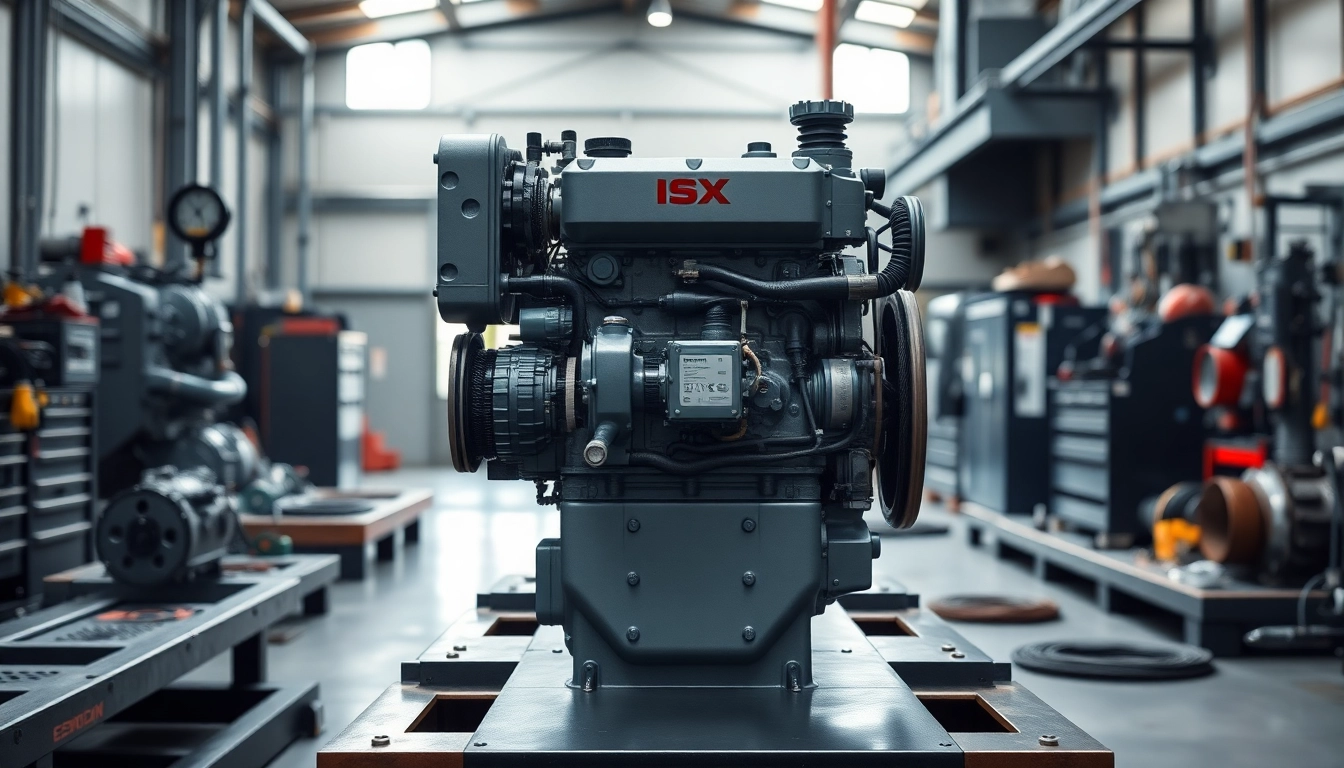What is a Pipe Stress Company?
Definition and Purpose
A pipe stress company specializes in the analysis and assessment of stress in piping systems used in various industries, including oil and gas, chemical processing, and power generation. Their main purpose is to ensure the integrity and safety of piping systems by evaluating the stresses caused by temperature changes, pressure variations, and other operational loads.
Pipe stress analysis is a critical aspect of engineering that helps prevent failures, leaks, and catastrophic breakdowns. Companies providing these services apply engineering principles to assess potential hazards and mitigate risks associated with piping operations. The analysis typically includes the use of specialized software and techniques to simulate various operating conditions that a piping system might encounter throughout its lifecycle.
Key Services Offered by Pipe Stress Companies
Pipe stress companies offer a suite of specialized services that include:
- Pipe Stress Analysis: Utilizing software tools and methodologies to assess the stress levels on piping systems.
- Design Assistance: Collaborating with engineering teams to design piping systems that meet appropriate safety standards.
- Consultation Services: Providing expert advice on piping systems, including recommendations for mitigating stress-related issues.
- Training and Workshops: Offering training programs to enhance the knowledge and skills of engineers in pipe stress analysis techniques.
- Compliance Assessment: Ensuring that piping systems comply with industry standards and regulations, such as ASME B31.
Importance of Pipe Stress Analysis in Engineering
Understanding the significance of pipe stress analysis is pivotal for anyone involved in industrial engineering. The primary importance lies in its ability to prevent catastrophic failures in piping systems, which can lead to significant economic losses and safety hazards. By performing thorough analysis, companies can:
- Identify potential weaknesses in a piping system design before construction begins.
- Anticipate how environmental factors like temperature and seismic activity influence stress levels.
- Ensure that all components of a piping system can withstand operational stresses without failure.
- Improve reliability and safety in operations by maintaining optimal performance of piping systems.
Understanding Pipe Stress Analysis Techniques
Methods and Tools Used in Pipe Stress Analysis
Pipe stress analysis employs various methods and tools, many of which leverage advanced software programs. The most common tools in the industry include:
- CAESAR II: A popular software tool used for flexibility analysis, designed to handle complex piping systems.
- ROHR2: This software provides a comprehensive analysis for both thermal and mechanical stress.
- SIMFLEX: A software suite from Peng Engineering known for flexible modeling and stress analysis capabilities.
Analysts use these tools to simulate the behavior of piping systems under various loading conditions, including temperature fluctuations, live loads, and dynamic forces. The methods employed range from finite element analysis (FEA) to simplified analytical techniques, each suited to specific scenarios and project requirements.
Typical Projects Handled by Pipe Stress Companies
Pipe stress companies manage numerous projects across various sectors. Common types of projects include:
- Petrochemical Plants: Analysis of complex piping systems involving multiple variables and high-pressure conditions.
- Refinery Projects: Safety assessments of piping systems essential for transporting hazardous materials.
- Power Generation Facilities: Evaluating the piping systems in coal, nuclear, and renewable energy plants to ensure safety and efficiency.
Each project demands a tailored approach, as no two systems are identical. The accuracy of stress analysis not only influences the project’s success but also impacts overall operational efficiency and safety.
Industry Standards and Compliance
Compliance with industry standards such as ASME B31, API standards, and international guidelines is essential for any pipe stress company. These regulations provide a framework for safe design and operation, ensuring that piping systems can withstand extreme conditions while maintaining structural integrity.
Pipe stress analysis must align with these standards, which cover various aspects including:
- Material selection based on operational environment and pressure ratings.
- Design codes that prescribe specific methodologies for calculating stress allowances.
- Installation practices to ensure that piping systems function as intended under real-world conditions.
By adhering to these standards, companies reduce liabilities and enhance the safety of their piping systems.
Challenges in Pipe Stress Engineering
Common Issues Faced in Pipe Design
Piping engineers encounter various challenges during the design and analysis phases. Some common issues include:
- Dynamic Loads: Changes in operational conditions can introduce unexpected stress loads, complicating analysis efforts.
- Thermal Expansion: Incorrect assumptions about temperature changes can lead to failure in piping systems due to excessive thermal stress.
- Material Fatigue: Over time, materials can become fatigued, especially in high-stress environments, necessitating regular inspections and analyses.
Addressing these issues requires continuous communication with all stakeholders involved in a project, from engineers and designers to construction teams.
Mitigating Structural Risks in Piping Systems
Taking proactive steps to mitigate structural risks can enhance the reliability and safety of piping systems. This includes:
- Regular Inspections: Frequent assessments to detect any early signs of wear and tear and to ensure compliance with safety standards.
- Redundant Systems: Designing backup systems to take over functionality in case of failure in critical piping systems.
- Using High-Quality Materials: Selecting materials that can withstand extreme conditions and are less prone to stress-related failures.
Ultimately, a robust risk management strategy will ensure that potential issues are identified and addressed before they escalate into serious problems.
Adapting to New Regulations
The engineering field is constantly evolving, with new technologies, materials, and regulations. Pipe stress companies must adapt to these changes to remain compliant and competitive. Some adaptations include:
- Continual Training: Encouraging ongoing education and training for engineers and staff to stay updated with the latest regulations and technologies.
- Investing in New Technologies: Utilizing innovative software tools that can handle complex calculations and simulations more efficiently.
- Collaboration with Regulatory Bodies: Engaging with industry organizations to help shape and understand the implications of new regulations.
Proactively addressing regulatory changes helps companies maintain their operational licenses and enhances their reputation in the marketplace.
Benefits of Choosing a Reputable Pipe Stress Company
Expertise and Technical Knowledge
When selecting a pipe stress company, expertise and technical knowledge are among the most significant factors. Established companies bring years of experience and a wealth of information gained from diverse projects. Their teams typically consist of seasoned professionals who are well-versed in local regulations, industry standards, and the latest methodologies. This can lead to:
- More accurate analysis resulting in fewer design changes.
- Increased compliance with both national and international codes.
- Improved safety outcomes through comprehensive risk assessments.
Cost Efficiency and Safety Assurance
Investing in a reputable pipe stress company can lead to significant cost savings over time. Such companies often provide:
- High-quality analysis that minimizes the risk of costly failures and project delays.
- Comprehensive project assessments to identify the most cost-effective solutions to meet design and regulatory requirements.
- Expert guidance on material selection, which can lead to reduced lifecycle costs for the piping systems.
Ultimately, proper analysis conducted by qualified firms not only leads to enhanced safety but also to the optimization of project budgets.
Client Testimonials and Case Studies
The effectiveness of a pipe stress company can often be gauged by their client testimonials and case studies. Real-world examples can provide insight into the company’s capabilities and past performance:
- Case Study 1: An oil refinery tasked a pipe stress company with analyzing its aging piping network. The result was a comprehensive report that identified critical vulnerabilities and recommended upgrades, leading to enhanced safety and efficiency.
- Testimonial 1: “Working with [Company Name] transformed our approach to piping design. Their insights helped us avoid potential pitfalls and streamline our project delivery.”
- Case Study 2: A chemical manufacturing facility collaborated with experts to redesign its piping system, significantly reducing operational downtime and improving asset longevity.
Through such testimonials and case studies, potential clients can better understand how a company can meet their specific needs and challenges.
Future Trends in Pipe Stress Analysis
Advancements in Software and Technology
The field of pipe stress analysis is rapidly evolving with technological advancements driving efficiency and accuracy. Future trends indicate an increased reliance on:
- Artificial Intelligence: AI is set to play a significant role in predictive analysis, helping engineers anticipate issues before they arise.
- Cloud Computing: Utilizing cloud-based applications for collaboration in real-time among teams regardless of location.
- Integration with IoT: Incorporating Internet of Things technology to monitor piping systems continuously and report stress levels dynamically.
These advancements will likely enhance the capabilities of pipe stress companies, allowing them to deliver more robust solutions to their clients.
Regulatory Changes Impacting the Industry
The landscape of regulations is subject to change, driven by new safety research and technological advancements. Pipe stress companies must stay abreast of these changes to ensure compliance. For example,:
- Updates to ASME standards can place higher demands on analysis protocols, requiring companies to upgrade their methodologies.
- Environmental regulations may necessitate changes in materials used in piping systems to align with sustainable practices.
- Safety regulations may evolve to include new assessment protocols to ensure the integrity of critical infrastructure.
Keeping abreast of regulatory changes is imperative for maintaining operational licenses and upholding safety standards.
Preparing for the Future: Skills and Education for Engineers
As the industry evolves, so too must the skill set of engineers specializing in pipe stress analysis. Future engineers should focus on:
- Advanced Computational Techniques: Gaining proficiency in the latest analysis software and modeling tools.
- Multidisciplinary Knowledge: Understanding intersections with other fields, such as mechanical, civil, and environmental engineering.
- Regulatory Awareness: Staying informed on industry standards and compliance requirements.
By developing a comprehensive skill set and staying current with industry trends, engineers will be better equipped to navigate the challenges in pipe stress analysis moving forward.



